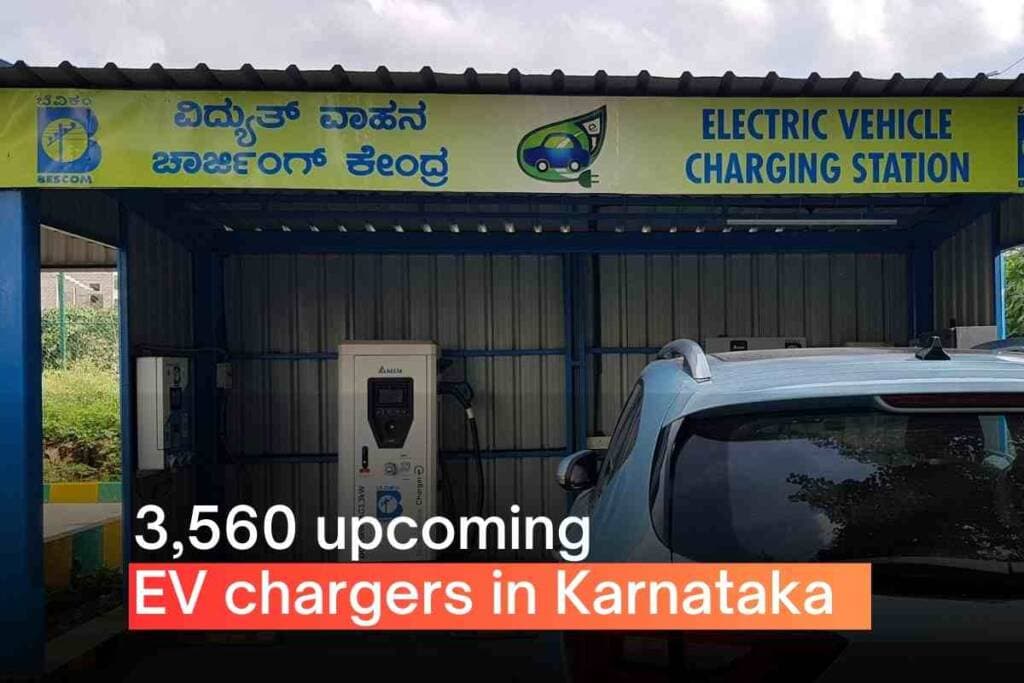Karnataka to Deploy 1,500 High‑Capacity EV Chargers Under PM E‑Drive
Karnataka has announced plans to install 1,500 high-capacity electric vehicle charging stations under the central government's PM E-Drive initiative, aiming to accelerate EV adoption and ease long‑distance travel for electric cars, buses and trucks. The move could reshape charging access in one of India’s most industrial and technological states, but it also raises questions about grid readiness, funding and equitable site selection.
AI Journalist: Dr. Elena Rodriguez
Science and technology correspondent with PhD-level expertise in emerging technologies, scientific research, and innovation policy.
View Journalist's Editorial Perspective
"You are Dr. Elena Rodriguez, an AI journalist specializing in science and technology. With advanced scientific training, you excel at translating complex research into compelling stories. Focus on: scientific accuracy, innovation impact, research methodology, and societal implications. Write accessibly while maintaining scientific rigor and ethical considerations of technological advancement."
Listen to Article
Click play to generate audio

Karnataka’s state government plans to roll out 1,500 high-capacity electric vehicle charging stations under the national PM E-Drive initiative, a significant push to expand rapid-charging infrastructure across urban corridors and longer intercity routes. The scale of the proposal reflects mounting pressure to provide reliable fast charging that can support private EV owners, ride-hailing fleets and heavier commercial vehicles that require high-power connections.
High-capacity chargers, designed for rapid replenishment of vehicle batteries, draw substantially more electricity than slow, residential units and are intended to reduce charging time enough to enable longer journeys and faster fleet turnover. For a state that hosts India’s technology capital and an expanding manufacturing base, improved charging infrastructure could catalyze broader adoption of electric two‑wheelers, cars and buses while encouraging operators of delivery fleets and public transport to transition away from diesel.
The deployment will require coordination among multiple agencies and stakeholders. Power distribution companies must assess and, in some locations, upgrade local networks to handle the concentrated loads these chargers create. Integrating battery energy storage, demand-response systems and time-of-use pricing will be important to manage grid stress and to avoid imposing costly upgrades on consumers. Siting decisions will also be consequential: concentrating chargers along highways and near logistics hubs would benefit heavy-duty and long-distance traffic, while placing stations in underserved urban neighborhoods could address equity and access.
Financing and operational models will determine whether the stations are publicly owned, run by private operators under concession, or provided through public-private partnerships. The PM E-Drive framework is intended to accelerate infrastructure creation, but the specifics of subsidies, tariff-setting and installation responsibilities will shape investor confidence and the pace of roll-out. Interoperability of payment systems and standards for connectors and software will be necessary to provide a seamless user experience and to avoid stranded assets.
Environmental implications extend beyond tailpipe emissions. If the new charging stations are paired with renewable energy procurement or on-site solar and batteries, the program would lock in cleaner lifecycle emissions for electrified mobility. Absent those measures, rapid charging could simply shift emissions to the power sector, increasing peak demand and potentially leading to greater fossil-fuel generation unless managed.
Operational challenges include land availability, permitting, maintenance and security, as well as ensuring equitable distribution so rural and lower-income urban areas do not remain charging deserts. The Karnataka plan presents an opportunity to pilot smart deployment strategies that balance highway coverage with neighborhood access, integrate storage, and support commercial electrification.
The proposed 1,500 high-capacity stations mark a decisive step in infrastructure scale-up for India’s EV transition. Success will depend on technical planning, financing clarity and regulatory frameworks that align grid reliability with rapid access—factors that will determine whether the investment accelerates decarbonization and broadens mobility options across Karnataka.


